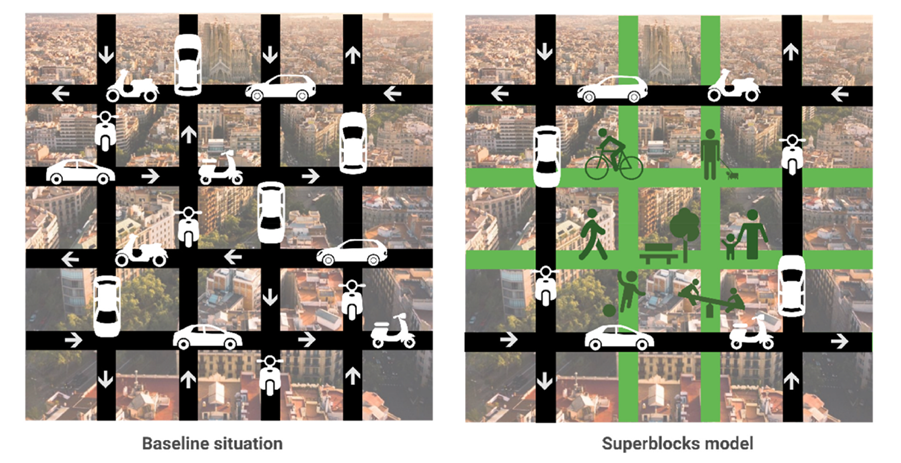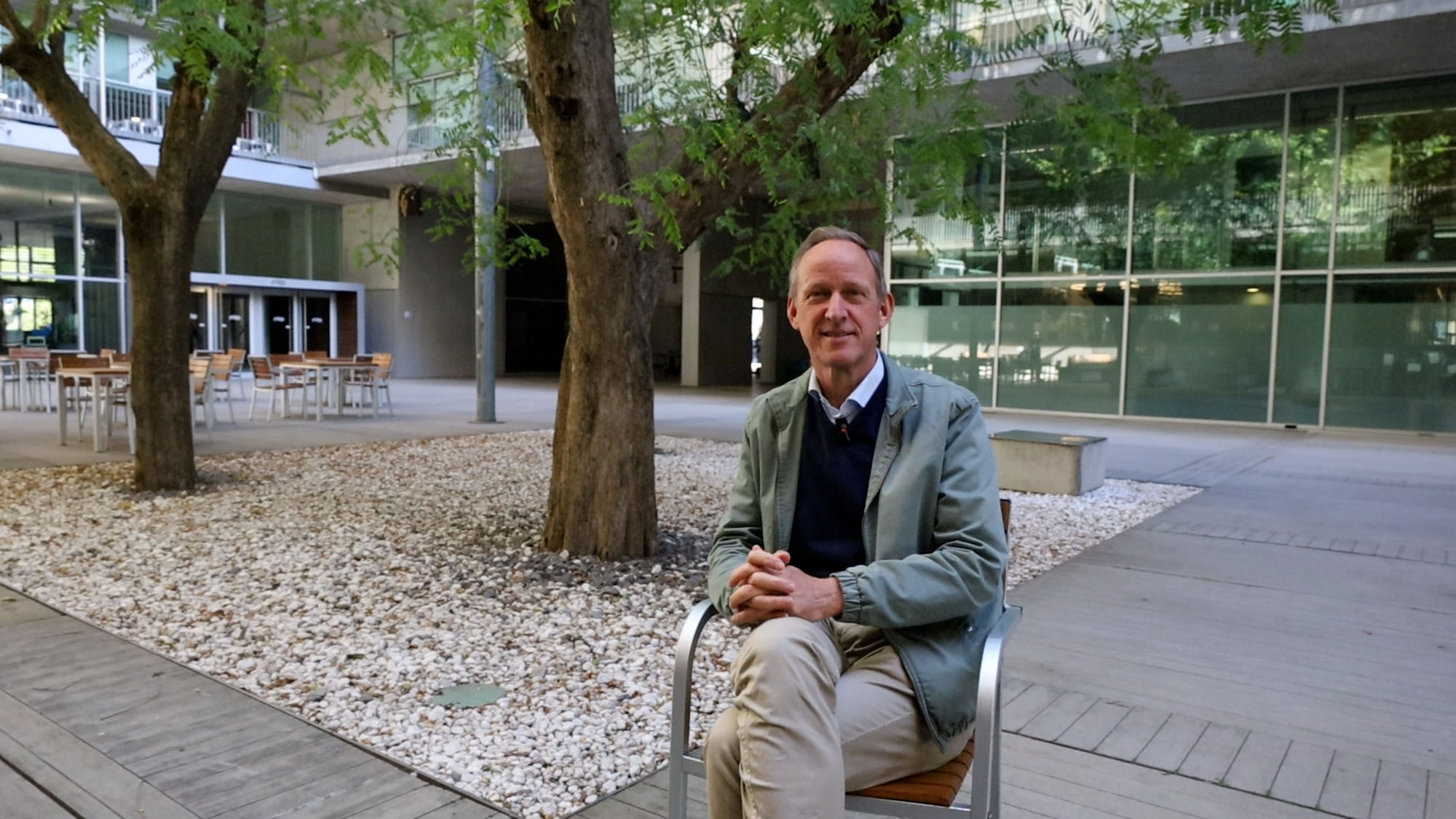The Superblock urban planning model comes from the architect Ildefons Cerdà, creator of the Cerdà Plan for Barcelona in 1855. It proposes a city model with less space for cars and more for nature, focusing on people’s well-being and social cohesion. The Barcelona Institute for Global Health (ISGlobal) has led a study to review the fundamental aspects of this model, which has been reformulated and implemented in Barcelona and other European cities since the early 2000s.
We spoke to Mark Nieuwenhuijsen, Director of the Climate, Air Pollution, Nature and Urban Health Programme at ISGlobal. The scientist is the lead author of tha recent review study, which involved institutions and universities from Spain, the UK, Bulgaria, Austria, Sweden, Norway, Germany, Belgium and Slovenia. This review is the starting point of a collaborative work that began at the First International Meeting on Superblocks, held in Barcelona in March 2023.
“We need to improve our cities, there is still a lot of health burden related to urban planning. That’s why this kind of new approach, such as superblocks, is attracting a lot of attention. We are several groups working on this in Europe and in an international consortium funded by the European Union”, explains Niuewenhuijsen.
The need for new healthy and sustainable urban models
The number of people living in urban areas is growing steadily. In Europe, more than 70% of people live in cities. Excessive air pollution, noise, and heat build-up in cities have a negative impact on the health of city dwellers. For example, urban heat islands in areas dominated by asphalt and traffic are responsible for 4% of summer deaths. Rising temperatures associated with climate change are exacerbating this problem and driving the search for sustainable solutions to mitigate it.
For this reason, several European cities are implementing new urban models that move away from the car-centric city of the 20th century. Good urban planning must ensure efficient urban management, but it must also recognise space as a common good and consider people’s health and well-being. Increasing the amount of nature in cities can create cooler spaces and improve the health of citizens.
“Urban models are subject to political decisions and the setbacks are a pity because we need more green spaces in the city to improve air quality and reduce noise. Too many people are dying as a result of air pollution.“
Mark Nieuwenhuijsen, ISGlobal
There are several innovative urban models to make cities more sustainable, such as the Superblock model in Barcelona, the 15-minute city of Paris or London’s Low Traffic Neighbourhoods. “The superblock model is quite unique and seems to be working. But urban models are subject to political decisions and the change of government in Barcelona has stopped this model. I think it’s a shame because we need more green spaces in the city to improve air quality and reduce noise. Too many people die as a result of air pollution” says Nieuwenhuijsen.
The Superblock model and its impact on health
The Urban Ecology Agency of Barcelona, headed by Salvador Rueda, reformulated the urban planning model contained in the Cerdà Plan of 1855 in the 2000s. Superblocks can be implemented by closing 9-block squares to traffic. The idea is to pacify the streets and replace the space for cars with vegetation, recreational areas, and pedestrian and cycle paths.
These models have been applied at different scales and in different neighbourhoods in the city of Barcelona since 2005. Moreover, superblocks are easy to implement in most cities and neighbourhoods, regardless of their original form. There are plans in this style in cities such as Berlin, Vienna and Bogotá.

The review article on this urban model gathers the available scientific evidence on its impact on human health, lifestyle, well-being, climate and the environment. “We are interested in assessing the impact of this urban model in terms of reducing pollution and noise, increasing green spaces, promoting physical activity and people’s health, etc.,” comments the scientist. Studying this requires an interdisciplinary approach involving various fields of study such as epidemiology, social and political studies, anthropology and economics.
The review conducted by this international group reports environmental and health improvements in urban areas using this or similar models, such as Green Axes. However, it recognises that more research is needed, including larger studies over longer periods of time. The article encourages further research into this model and also reflects on some of the issues that need to be considered when implementing it, such as environmental justice and the risk of gentrification.
The Superblock model addresses the environmental and public health challenges posed by urban population growth and climate change. Increasing nature and reducing stressors in cities is key to improving people’s lives. It is also in line with European policies and guidelines such as the new European Green Deal or the Mission on Smart and Climate Neutral Cities.
For more on the importance of nature in cities, have a look at this short video that also features Mark Nieuwenhuijsen.
Nieuwenhuijsen, M., de Nazelle, A., Pradas, M. C., Daher, C., Dzhambov, A. M., Echave, C., Gössling, S., Iungman, T., Khreis, H., Kirby, N., Khomenko, S., Leth, U., Lorenz, F., Matkovic, V., Müller, J., Palència, L., Pereira Barboza, E., Pérez, K., Tatah, L., … Mueller, N. The Superblock model: A review of an innovative urban model for sustainability, liveability, health and well-being. Environmental Research. March 2024 https://doi.org/10.1016/j.envres.2024.118550







